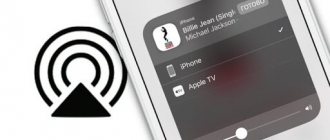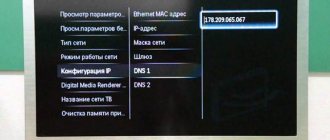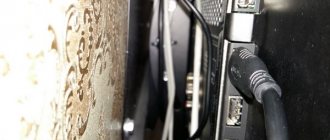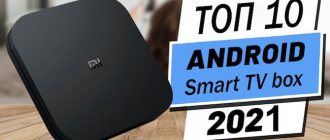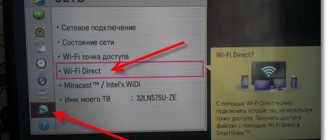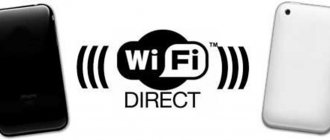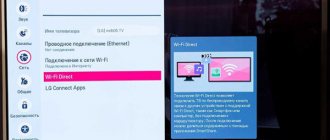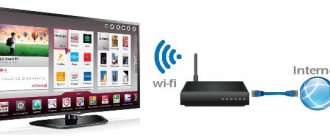Why do you need Wi-Fi direct?
The main purpose of the technology is to access the global network without using a router. In this case, the user does not need to spend additional money on purchasing a router or setting up its operation.
Wi-Fi direct is built into many TVs and allows you to immediately connect to the Internet without purchasing various equipment.
Wi-Fi direct is also available in smartphones. To activate this function on your mobile phone, just enable the access point mode. Then the device will begin to distribute the Internet to other gadgets, acting as a router.
Pros and cons
There are no difficulties when setting up the technology. The network is already built into the TV by default, so there is no point in buying a Wi-Fi router.
High data transfer speed. This figure is higher than that of conventional Wi-Fi networks. However, a lot depends on the Internet provider.
Supports many devices. Wi-Fi direct is supported not only by modern TVs, smartphones, but also tablets running Android OS.
Supports almost all operating systems. For example, Windows, MacOS, iOS, Android.
Low level of security. The network that will be created by Wi-Fi direct can be easily hacked and then connected to it. To do this, you don’t need to be a hacker; just download the appropriate application from the Google Play Market for selecting passwords for Wi-Fi networks.
Battery drains quickly on phones using this technology. This circumstance is caused by file transfer at high speed. This feature does not apply to TVs, because they work without a battery from a 220 Volt outlet.
The technology creates several separate channels at the same time, which negatively affects the overall speed of information transfer to several devices at once.
Crashes and freezes are possible during operation, especially if one device shares the Internet with several gadgets at the same time.
In the settings of any brand of TV, Wi-Fi direct can be activated in a couple of seconds. To do this, just move the slider opposite the mode to the active position.
Wi-Fi Direct technology in TV settings looks like this:
What is Wi-Fi Direct
Wi Fi Direct is a relatively new wireless communication protocol designed to connect two or more devices without routing equipment. Simply put, a technology that allows us to connect Android phones and/or tablets into one network without requiring a router.
Technically, this is implemented on Wi-Fi modules, similar to those that provide us with Internet access. Accordingly, the technology will support the same wireless communication standards. The modules operate at a frequency of 2.4 or 5 GHz, but most of them support both modes, so they can work in wireless networks of any standard (802.11 a/b/g/n/).
A reasonable question arises: how does a Wi-Fi connection differ from the Bluetooth technology we are used to? Here are its main differences:
- higher data transfer speed;
- wider range of action;
- and most importantly - the ability to connect several devices together, and not just two; Moreover, for this, only one of them, equipped with a chip that supports Direct, will be sufficient.
In addition, users do not yet have a consensus on the security of such connections. The developers claim that the level of security of Wi Fi Direct is higher than that of Bluetooth, but in reality it turns out differently. For a home network there will not be much difference, but when you connect a group of devices to a Wi-Fi network, say, in an office, each of them not only creates a separate connection (which significantly clogs the airwaves), but can also serve as a proxy for anyone connect to it. It turns out that the level of connection security at this moment remains in question.
Preparing for first use
On an Android phone, to activate the technology, just enable the “Access Point” mode. After this, if the SIM card supports Wi-Fi Direct, an icon in the form of three stripes will appear in the phone’s status bar. In this case, you also need to connect to the mobile Internet, otherwise you won’t be able to distribute the network to other devices.
Wi-Fi hotspot in smartphone settings:
When using Wi-Fi direct mode, mobile Internet traffic is consumed.
To use the function on Smart TV, you need to go to the device settings and activate it.
Features of using the function on iPhone
Let's consider connecting the Wi-Fi Direct function on the iPhone.
- First, you need to make sure that the latest version of the operating system is installed on your smartphone. If there was an update, you need to install it and then restart your mobile device.
- Also on the TV you need to check the OS update, as well as the Wi-Fi Direct connection.
- First, the feature is enabled on the device you want to connect to. Once in the “Menu”, go to the “Settings” section. Find "Wi-Fi Connection" and activate it.
- Then Wi-Fi on the phone turns on. Among the available networks, you should find the one that the TV creates (the TV name will be displayed).
- You can connect to the device by entering the Wi-Fi password indicated on the TV screen.
- If the connection does not occur, it means that a mistake was made somewhere. Check all the points carefully, especially that the password is entered correctly and whether there is an update. You can turn off and restart your iPhone.
Setting up Wi-Fi Direct on Android devices
Before you start using the technology, it doesn’t hurt to configure it. To accomplish this task, you can use the following algorithm:
- Go to the settings of your mobile phone by tapping on the gear icon on the desktop.
- In the presented list of parameters, find the “Wi-Fi” section and tap on it once. A list of access points located in close proximity to the smartphone will open. Most of them will be password protected.
- Scroll down the list and find the line “Wi-Fi direct”.
4. If necessary, you can go to the technology settings menu and configure it by changing the static IP address, subnet mask, etc.
On Android devices, in most cases there is no need to configure Wi-Fi direct, i.e. The mode works stably out of the box.
How to transfer files from Android using Wi-Fi direct
By reading the information in the previous paragraph, you can find out whether the Android device supports the data transfer technology in question. The mode can be activated according to the following scheme:
- Similarly, go to the Android settings and expand the “More” item.
- In the “Wireless Networks” section, tap on the “Modem Mode” item.
- Activate the “Access Point” function by moving the slider opposite to the active position.
- Set a password on the access point to prevent it from being hacked. If desired, you can change the default network name to any other.
- Turn on the Internet on the device so that you can distribute the network.
A smartphone operating in modem mode can also access the global network. However, if other gadgets are connected to it, the transfer speed drops sharply, and the battery charge quickly decreases. Therefore, it is better to always keep phones with poor battery life on charge when Wi-Fi direct is activated.
If a person manages to connect to another smartphone via Wi-Fi direct, then he can easily use the Internet for free. For example, watch videos, transfer files, download various information. games, etc. However, it is necessary to remember that the more actions a phone user performs on the Internet, the faster mobile traffic is spent.
To deactivate Wi-Fi direct on devices running the Android operating system, just turn off the mobile Internet. In this case, the operation of the technology will immediately stop.
Advantages and disadvantages
Let's talk about the benefits of WiFi Direct:
- Easy connection setup – no need to buy a router or set up complex network settings;
- The option is supported by most modern devices - TVs, tablets and phones. If connection is not possible, you can purchase a special adapter;
- The technology is universal and suitable for any operating system - both Windows, Android and iOS;
- The data transfer speed is at a high level, sufficient for most users.
Let's briefly go over the disadvantages - without them it is impossible to get a complete picture of Wi-Fi technology:
- Low level of security due to the fact that any mobile device plays the role of a proxy. That is why any third party can access the information;
- Since files are transferred at high speeds, you can expect the battery to drain quickly;
- Wi-Fi connection technology is such that after switching on, several separate channels are created, which cause a decrease in the speed of all networks.
How to connect a smartphone to a TV via Wi-Fi Direct
The procedure for completing the task is divided into several stages, each of which deserves detailed consideration. This will be discussed further.
Launch Wi-Fi Direct on your TV
First you need to make sure that the TV is working properly without glitches or errors. After this, you can launch wireless data transfer technology. Experienced experts recommend using the following algorithm:
- Enter the TV settings using the remote control.
- In the settings window, you need to find the “Network” or “Internet” section. The names of the items will vary on a specific model.
- Find the line “Wi-Fi direct” and tap on it using the OK button on the remote control.
- Move the slider opposite the technology to the active position, thereby launching it.
- Next, the TV system will begin searching for nearby devices to connect to. Now you can move on to the next step.
Pros and cons of technology
Like all communication methods, Wi-Fi Direct on a TV has its advantages and disadvantages. Compared to other solutions, it has undeniable advantages.
- Easy connection. There is no need to purchase a router. A network will be created between two devices, you connect to it and use it.
- High data transfer speed. Most modern devices are equipped by manufacturers with the appropriate protocol.
- Wi-Fi Direct is supported by most modern devices. Therefore, there will be no connection problems with your TV, tablet or smartphone.
- Universality of technology. It is supported by all operating systems from Windows 10 to Android and iOS.
On a note!
If, for example, an LG or Samsung TV does not have this function, you can purchase a universal adapter for any TV model. It will work as a built-in module. Let us also list the disadvantages of the technology.
- Low level of security. A user with any mobile device can connect to your connection.
- Small connection area. Wi-Fi Direct works within one room. TVs and mobile devices do not have such powerful antennas for transmitting and receiving signals as routers.
- Battery drains quickly. Due to the high data transfer speed on a smartphone, energy is wasted quickly.

